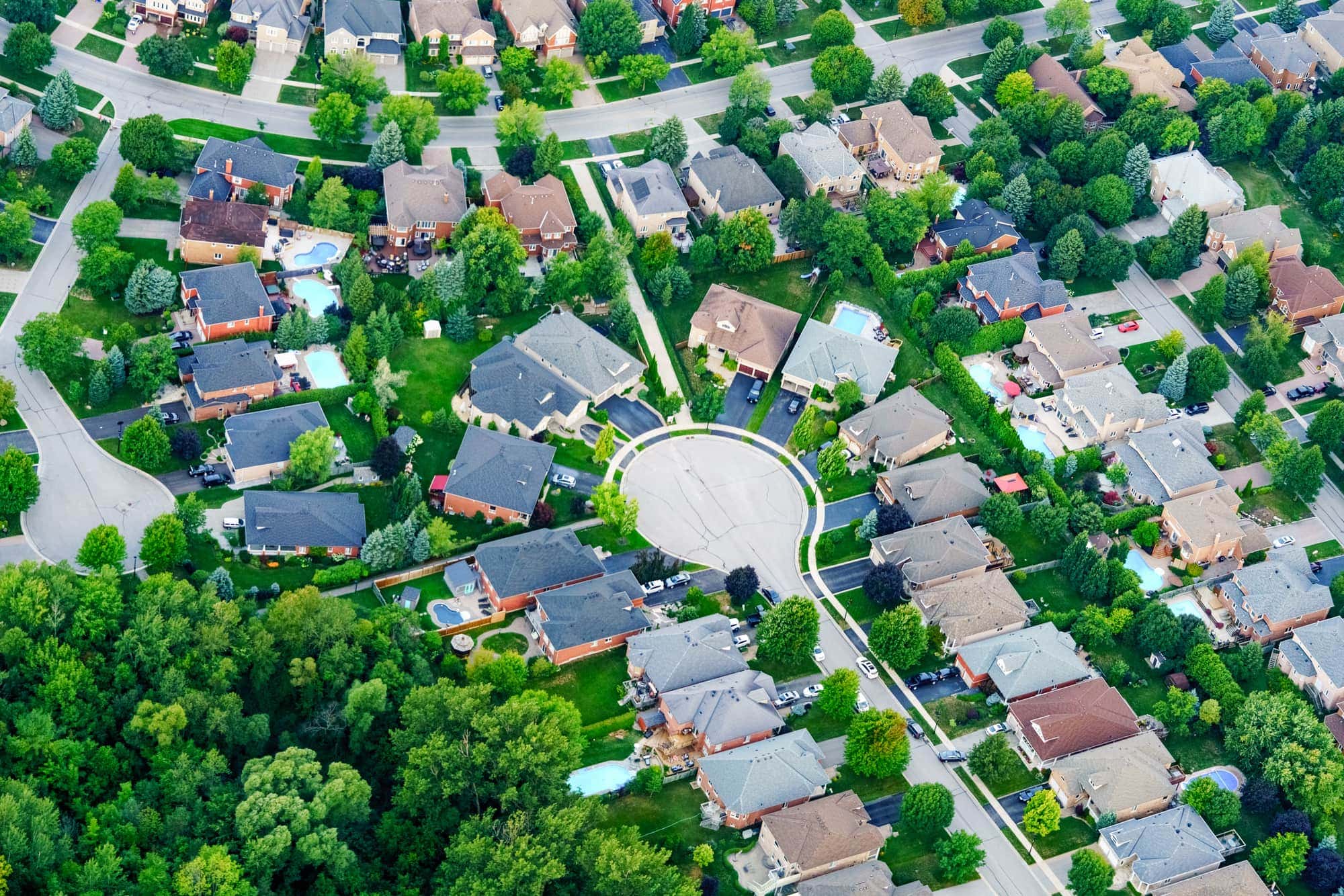Are you looking for a perfect home to buy? A planned community could be your best bet for a single-family house.
A planned community is an old idea dating from BC to the Middle Ages. For instance, the Ancient Greeks and some European cultures built several cities using this idea centuries ago. It was until the 20th century that the style became more popular.
Even today, planned communities are still common around the world. Central Park, South Carolina, and South Korea are some examples. National capitals worldwide also borrow the idea of planned communities.
This article answers the question of what is a planned community, its characteristics, benefits, and more. Also, we answer some of the most asked questions elaborately to help you understand this topic better.
Are you considering debuting the home buying and selling business and wondering whether planned communities fit perfectly? Scroll on to learn more.
What Is a Planned Community?
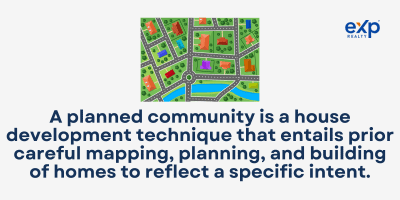
Planned communities are ancient architectural ideas dating from the 4th century BC. However, these homes became popular in the 20th century after the introduction of the Garden City Movement. Welwyn Garden City was among the first towns to borrow the idea.
A planned community sometimes referred to as a greenbelt city, garden city, or new town is a house development technique that entails prior careful mapping, planning, and building of homes to reflect a specific intent. The motive behind planned community development is to ensure the town is as self-contained and convenient as possible.
Thus, planned communities typically include all features and amenities that the constructors think are necessary for convenient and comfortable living. These features often include good roads, retail stores, lots of green space, and amenities like parks, walking paths, biking trails, playing fields, and more.
Planned communities’ construction often occurs on undeveloped land. The architect in charge plans and maps the structure before building to ensure the results reflect the small town’s intended feel, look, and future. Also, some communities control further development and usage of the land where the settlement is located and around it to secure the future intent.
Canberra City, Australia, planned by Walter Burnley, an American architect, is among the most famous fully-planned cities globally. It’s among the towns built after the introduction of the garden city movement.
Is a Planned Community Same as a Traditional Community?
Sometimes people confuse planned communities with traditional communities. However, the latter entails developers constructing rows of houses on land and traders starting businesses around the communities without prior planning.
In other words, traditional communities require no planning and consultation on what amenities the area contains. The developer only needs to construct houses on the land. After seeing potential clients, business people establish commercial enterprises to capture the market.
Until businesses decide to move closer to the settlement, residents of a traditional community may have to drive to nearby urban centers to access the necessary products and services they need.
Planned communities, on the other hand, involve strategic planning and intentional development. The communities are deliberately constructed near retail stores and other essential amenities to ease the life of residents. They’re relatively large suburban houses typically located on major cities’ outskirts.
Key Characteristics of a Planned Community
Building a garden city involves prior planning and mapping, with developers considering the projected population the small town should carry.
Some essential things to consider are the community’s expansion potential, necessary infrastructure, amenities, and everything developers feel will make the residents’ lives more comfortable or boost convenience.
Affordable housing, for instance, is typically at the peak of planned community developers’ interests. Thus, the project often includes a range of homes to fit the needs and lifestyles of different residents. Amenities like parks, swimming pools, and fitness centers also make up part of most planned communities.
A planned community can sometimes occupy a vast parcel of land with subdivisions. These types of housing projects are referred to as master-planned communities. They contain subdivided and interconnected villages partitioned, depending on the size of houses, amenities available, and price ranges.
While all residential neighborhoods have the amenities you desire, the master-planned residential developments have a more varied range of urban offerings, sometimes including art galleries, zip lines, water parks, coffee shops, etc.
Does the question, what is a planned community bother you? Here are some key characteristics to look out for in the homes you check and help you answer the question:
1. Controlled Land Use and Development
Garden city developers sketch the small town’s intended look, feel, and future before construction begins. After construction, active management teams run and oversee the community’s affairs.
One of the significant responsibilities of these management teams is to ensure that the overall property and surrounding areas are well attended to, and the settlement remains tidy and functional.
The developers control land use and development activities around the communities to ensure that the intent of the construction remains intact as long as possible. For instance, any form of expansion must be in line with the guidelines of the community planners, and only authorized improvements can occur.
Also, no further land developments must touch the designated vast open spaces, as green environments are mandatory architectural design requirements.
2. Shared Amenities and Services
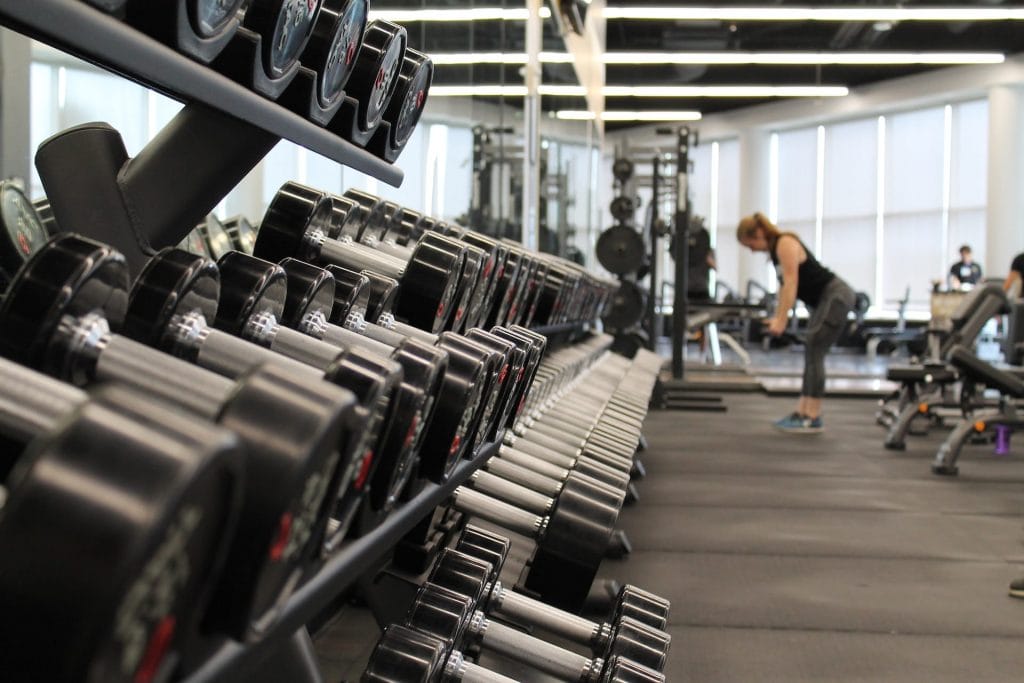
One of the reasons most people love planned communities is the availability of essential amenities. If you’ve ever dreamed of a life where you wake up in a scenic environment with vast areas of green vegetation, work out in the nearby gym in the morning, and prepare for your job, then a planned community is your best bet.
Also, these homes find favor in the eyes of most retirees due to their communal culture. The feeling and joy of meeting like-minded neighbors on sports fields like golf courses or tennis courts bring togetherness and a sense of family.
Also, you no longer need to travel away from your residence to enjoy the beauty of parks or go hiking and biking on trails far away from home.
However, be ready to share the amenities with other residents. Planned communities typically contain features that are only available to the residents. That also comes with several perks, especially for residents that love living in a cohesive environment, enjoy making friends, and value communal culture and connectedness.
3. Consistent Architectural Style and Appearance
Planned communities typically have consistent architectural style and appearance. That’s one of the ways you can note a garden city from other ad hoc housing developments.
These homes’ curb appeal, physical properties, and internal and external designs are typically similar to planned communities.
However, master-planned communities may slightly differ in housing styles, prices, and design styles. These estates are developed to allow for more flexibility and customization.
Thus, the homes are subdivided into interconnected villages depending on the various disparities (house sizes and price ranges) to offer the residents more options and lifestyle flexibilities.
4. Common Amenities and Services
Alongside fitness centers, pools, and parks, planned communities often contain amenities to make life as easy for the residents as possible. Planned communities are typically constructed a walking distance from shopping centers to ease accessibility to essential amenities.
In large-scale options like master-planned communities, the area may include a commercial district as part of its amenities to offer more convenience.
Also, the planned communities will typically include parks, golf courses, hike and bike trails, community recreational centers, and more. The amenities may differ from one planned community to the next. Still, these housing developments will have several features to keep you comfortable and make your life more convenient.
The amenities may be elaborate for master-planned communities, including coffee shops, water parks, and more. The underlying intent of the communities is to ensure that the residents can easily access services, goods, and supplies as much as possible.
Different Types of Planned Communities
Planned communities are well-spread around the world. However, the coastal and southern states have the highest number of these housing projects, with Texas, California, and Florida among the top-selling communities.
While answering the question, “what is a planned community?” It’s essential to understand the various types of this architectural design and the features that set them apart.
Here are some of the most common types of planned communities:
Traditional Neighborhood Developments (TNDs)
Traditional neighborhoods don’t necessarily imitate the design of planned communities from the planning stage. However, the result often appears the same as a planned community.
With traditional neighborhood developments, developers build rows of houses on an available parcel of land and rent or sell it to buyers. As time passes, businesses explore the area and start commercial enterprises within the neighborhoods.
The businesses were never part of the plans for the community’s future. However, they have become part of the development area and contribute to the convenience intended for planned communities.
TNDs include numerous house types, different land uses, and walkable designs.
Gated Communities

As the name suggests, gated communities refer to housing projects surrounded by permanent perimeter walls and fences from end to end. Most of these communities have specific entrance points (gates) to minimize access from strangers.
Some gated communities have security set-ups at these entrance points (can be one or numerous) to puff up the safety of the residents. Only residents and their authorized guests can access the compounds in such residential developments.
Whether security guards are at the entrance, most gated communities have automated card readers, electric keypads, or key fobs to allow authorized members to enter exclusively.
That’s a trait that’s common with most planned communities. They have gates with puffed-up security options to make you feel safe. It could be a trained security personnel operating the gates, officers conducting 24/7 patrol, or both.
Active Adult Communities
Active adult communities are housing developments designed to offer residents maintenance-free, independent living. They’re typically aimed at senior residents aged 55 and above.
Depending on your needs, you should check out one of the two types of active adult communities: age-targeted and age-restricted housing projects.
Age-restricted active adult communities require that at least 80% of the residents have a member aged 55 and over. On the other hand, age-targeted active communities market to people who are 55 years and above. However, the authorized residents are not limited to the 55+ age bracket.
While the primary market for active adult communities is 55 and above, the homes are available even for anyone looking for single-family residences. Thus, families with kids and adults below the age bracket can also get accommodation from the houses. But they should keep the age rules, especially the 80% requirement.
They typically include various house designs such as townhouses, condos, patio homes, mobile homes, or apartments.
Are They Perfect for the Old Residents?
These communities aim for middle-aged residents who live independently and in neighborhoods with easy access to community programs, resort-style amenities, and convenient services. They’re ideal for seniors looking for low-maintenance life but don’t need access to senior services like memory support or assisted living.
Is an active adult community your best option? It could be, especially if you can independently manage your daily personal and household tasks and take care of yourself without necessitating the services of a trained healthcare expert or home aide.
In other words, an active adult community isn’t ideal for extremely old seniors or those with various cognitive or severe physical implications necessitating assisted living.
Benefits of Living in a Planned Community
Planned communities have gained massive popularity from their inception, thanks to the perks of living in such residences. Part of answering the “what is a planned community” question entails understanding the benefits of living in such housing projects.
Apart from the various amenities, garden city residents enjoy proximity to the big towns, thanks to their location. They also have better infrastructure, and the residents can live without fearing insecurity.
Here are some reasons to sell your home and buy a house in a planned community:
1. Planned Communities Foster a Strong Sense of Community
Planned communities are ideal residential properties, especially if you enjoy sharing your life with a closely-knit neighborhood. First, planned communities have shared amenities that bring you together with your neighbors and may spark friendships.
Unlike the usual waving and nodding in most private compounds, starting a conversation with the neighbor you find in the gym daily or on the walk paths every evening is much easier. Also, starting a conversation with someone you share a golf course with is much easier than with a neighbor you occasionally see when going out.
Similarly, the idea behind a planned community is to bring the neighbors together and encourage cohesive living. Thus, several planned neighborhood events and activities are to do with fellow residents. The houses’ proximity and many shared spaces make it easy to interact and do several things with your neighbors.
Apart from the fun, this communal culture fosters easy and friendly interactions with your neighbors. It’s an ideal home for retirees, especially those living alone, as they can always have people who care for them.
2. Increased Safety in Planned Communities
Safety is often the most significant concern when buying a new home, especially if you have kids. You want a place with low crime rates and minimal chances of intruders.
A Planned city is an ideal town when looking for heightened security. Most of these communities have gates with automated electronic keypads, smart cards, or key fobs to limit entry only to authorized members.
Also, some planned communities have 24/7 security personnel on the entrance points and patrols to ensure heightened safety around the housing projects.
The CCTV cameras at each corner of the community will also give you much peace of mind, knowing that no intruder can access the property unnoticed.
3. Planned Communities Boast Abundant Green Spaces and Parks
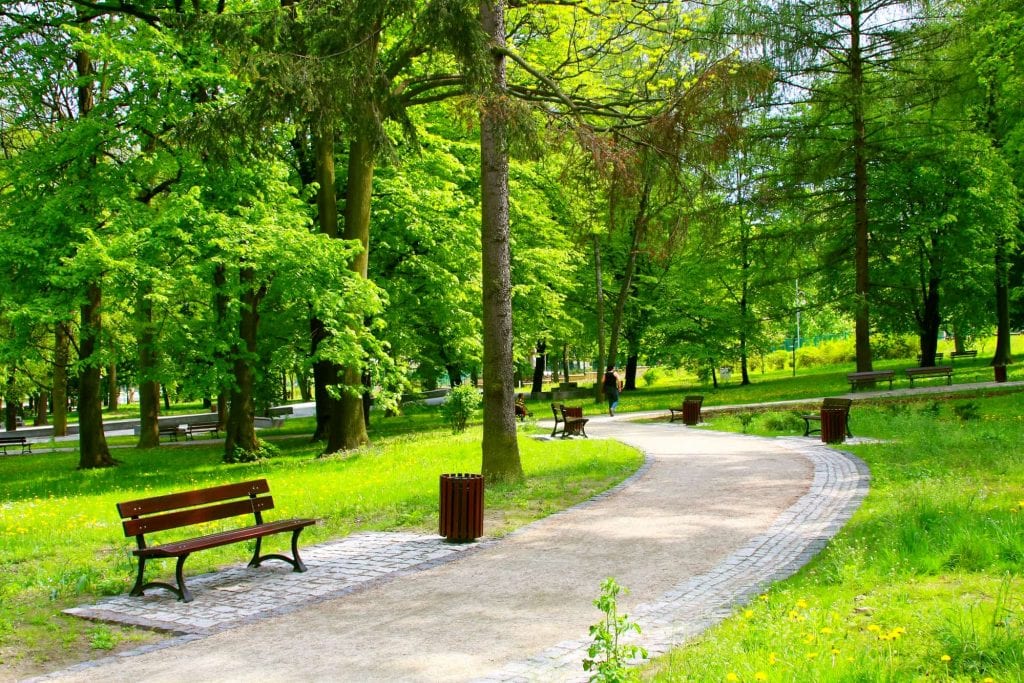
No answer to the question, “what is a planned community” is complete without mentioning the vast green space.
One of the reasons planned communities have become favorites to most home buyers is the availability of green space and dedicated recreation areas. The vast green vegetation, with tranquil walking paths and biking rails, will keep you rejuvenated daily.
Also, planned communities boast gorgeous landscapes to give a beautiful and peaceful scenic environment to which you’ll be happy to return after every day’s work. The sports fields, bike paths, trail systems, trees, and flowers in the woody areas are enough to keep you moving and loving your environment.
4. Planned Communities Offer Access to a Wide Range of Amenities
Another reason planned communities are selling very fast is the availability of all the essential and recreational amenities. Buying a home in such suburbs allows you to enjoy beautiful morning walks through wooded trails within the community, enjoy your bike riding exercises, or work out at the available fitness centers.
Even for nightlife enthusiasts, most planned communities have clubhouses nearby to keep you entertained. Also, the community centers and recreational facilities are brimming with activities to make your days fun and adventurous.
Living in a planned community also means you no longer have to grab your car keys and drive for miles to get milk and bread in the morning. Most of these housing projects have convenient shopping centers within walking distance to help you get what you want at the right time.
If you’re into sports, the options are endless. Most planned communities have golf courses, bowling alleys, tennis courts, and other sports fields to keep you enjoying your hobbies. Some even include restaurants for more convenience.
The massive outdoor lounge areas, alongside other state-of-the-art amenities, mean you never have anything to worry about, especially when you have large groups of guests to entertain.
The communal culture, shared amenities and planned community events make these housing projects the best choice for residents who love interacting and forming new friendships with their neighbors.
Your preferred planned community may have only some of the desired amenities and features. However, every community has something good to offer to the residents. Thus, shop around, checking out the amenities you value.
5. Planned Communities Lead to a More Convenient Lifestyle
Every new home buyer wants a community that allows more convenience and ease of life. And planned neighborhoods offer this and more. Almost all essential amenities are walkable to enhance comfort for the residents.
Planned communities are typically located on the city’s outskirts, meaning less traffic and easy commute. Planning the communities entails mapping the roads to ensure a smooth traffic flow. Also, the communities are located near numerous high-quality public transport systems.
Most planned communities include all the essential amenities and allow easy access to all the vital services, including stores, shops, and other amenities. The gated entries help limit traffic only to residents and their authorized guests.
What Is a Planned Community? Key Takeaways
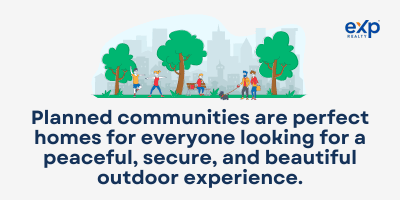
Planned communities are perfect homes for everyone looking for a peaceful, secure, and beautiful outdoor experience. The gated entries ensure that only residents and guests can access the community.
Planned communities have the amenities, beauty, and other perks to make them your ideal home. This article has provided a detailed view into the question, “what is a planned community?”
After considering the perks, is this an ideal town for you and your family? It’s time to consider your options and start your journey to purchasing your perfect home in your desired planned community.
However, you don’t have to go through the process alone. Having a real estate agent by your side will help you make the right decision and relieve you of the responsibilities and stresses of the property industry.
However, ensure you’re working with a professional real estate agent. Ask the right questions before committing to the buying process.
Get Your Ideal Home
Are you wondering where to start? eXprealty is here to help you get the ideal home for your family in the best-planned community. Check out our website to see some properties for sale and start your buying process. Our real estate agent directory has your back if you want a reliable agent. Contact a local eXp agent today.
Are you interested in learning more about real estate or buying properties? Sign up to get alerts of new properties, condos, houses, and other listings when they come on the market. Sign up here.
FAQs
Do you still have questions about what a planned community is? We’ve collected some related FAQs from Google’s People Also Ask and forums to help you understand the topic more.
Which is the best definition for the term planned community?
A planned community refers to an architectural development whereby the homes, stores, roads, and other essential amenities are carefully planned and designed to ease the lives of the residents and make life at the houses as convenient as possible.
The developers plan and map the project to follow a given architectural style and attain a specific feel and look. They’re typically constructed with perks and amenities, making them self-contained and convenient for residents.
A planned community is often built on undeveloped land. It’s typically a large, suburban settlement located on the outskirts of a major city, packed with all the necessary amenities, reliable infrastructure, and other perks.
Why is it important to have planned communities?
A planned community has many perks for the developers, residents, and the environment. First, the epic setting, with vast areas of green vegetation, ensures clean air for residents. Also, the availability of all the necessary amenities and features makes the homes a perfect investment since they are easier to sell for more profits.
These cities are constructed to reflect the future population, including all the amenities and features that will appeal to them. Thus, being part of a planned community also offers you a chance to contribute to the development of the entire city.
Other reasons to be part of a planned community include the following:
- The heightened security in such housing developments
- The sense of community
- Ease of home customization
- Easy access to essential community services
When did planned communities start?
The idea behind planned communities dates back to the BC era, with Miletus, Greece, being the earliest recorded use of the housing style. This architectural design was also present in the early Middle Ages, especially in European cities.
However, the modern-day planned community styles started with the Garden City Movement. Welwyn Garden City, England, was among the first towns to be constructed under the Garden City Movement. These garden cities were designed to combat the development of crowded, dirty cities resulting from the widespread Industrial Revolution.
Planned cities became popular in the 20th century. These housing projects depict complete small towns with significant amenities and essential services within walkable distances to enhance convenience. Modern planned cities have a single most important goal: to be as self-contained and convenient as possible.
What is a planned vs. unplanned community?
Unplanned communities refer to houses within a real estate whose construction didn’t require planning, assessment, or construction by a government or private developer. Instead, communities building these residential or corporate settlements begin and complete their construction with little government or professional developer involvement.
On the other hand, planned communities refer to settlement properties in which private or government developers take part from the beginning to the end of construction. Unlike their unplanned counterparts, these constructions involve the expertise of an experienced developer and property planner from inception to the end.
From the beginning, these cities follow the guidance of a professional planner to meet the needs, lifestyle preferences, and feel of their future projected inhabitants. To achieve this, planned communities display a flawless balance in infrastructure, social, economic, and cultural features, housing, and essential services to match the projected city’s future.
What are the amenities in a planned community?
Amenities in a planned community refer to all the physical features and perks you enjoy by residing in such housing developments. For instance, most planned communities contain a lot of green space to spark the beauty and tranquility of the environment.
These communities will also include various features depending on the forethought occupants. For instance, a planned city marketed for families with kids will contain things like children’s playgrounds, parks, and more. On the other hand, golf courses and other related sports fields appeal more to the adult population.
While no two planned communities may look the same regarding their amenity offerings, almost all these developments will have features to make life more convenient and fun for the residents. Some amenities to expect from different planned communities worldwide include:
- Shopping centers
- Parks
- Restaurants
- Playgrounds
- Fitness centers
- Swimming pools
- Walking and biking trails
What is an example of a planned community?
From their onset in the 4th century BC and beyond, planned communities have spread worldwide. Columbia, Florida, Chandigarh, Zurich, Welwyn Garden City, and California are among the most famous planned communities globally.
Virginia, Las Vegas, South Carolina, Central Park, Irvine, Sea Ranch, South Korea, Singapore, Denmark, and the Netherlands are also some examples.
What is the largest planned community in the United States?
The Woodlands treads down history as the largest planned community in the United States. It sits on a vast 28,500 acres of land and boasts a remarkable 28% green space. The residents can enjoy an exclusive outdoor experience on the community’s 151 parks, 220 miles of hike-and-bike trails, and an ample forest reserve.
The Woodlands has over 120,000 residents, above 63,000 employees, and approximately 2,300 employers.
What is a well-planned community?
A well-planned community refers to a housing development that involves thorough planning from the first phase of the construction process to the last. It involves a prior mapping out of the community to provide a road map for the residence to reflect the projected feel, look, and design.
These communities have an excellent layout plan, access to reliable public transportation, essential amenities, and more. They also boast perfectly planned neighborhoods and clean open areas for public use.
Some of the world’s most well-planned communities include Singapore, Seoul, Amsterdam, South Carolina, and Brasilia.
What makes a community a master-planned community?
A master-planned community is a housing development envisioned and designed to be a self-contained, unified settlement. Unlike a planned community, a master-planned community sits on vast acres of land, with mixed-use residential units packed with robust, customizable amenities to make residents’ life as convenient as possible.
In most cases, master-planned communities lie on large pieces of undeveloped land. Thus, the settlement is often subdivided into interconnected villages depending on factors like house sizes, price ranges, and available amenities. Since they’re large, these settlement communities come with more robust amenities, with varying options for personalization.
